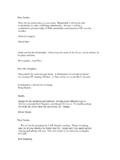Transcription of Dear Dinosaur lesson plan (3) - Barron's books
1 Dear Dinosaur Chae Strathie; illustrations by Nicola O Byrne After a trip to the museum, Max writes a letter to his favorite Dinosaur , the mighty T. Rex, and Rex writes back! So begins a very unusual friendship in this interactive tale that features real letters and cards to open. Children will most certainly enjoy getting to know Max and T. Rex in the beautifully illustrated picture book, Dear Dinosaur . They will eagerly await each letter and response as much as the characters themselves. Vocabulary Words to know in Dear Dinosaur letter reply greetings vacation imagine Dinosaur museum fossils curator mammoth terrifying carnivores rude impressive triceratops compsognathus desert Pre-reading Questions for Dear Dinosaur Who has ever visited a museum?
2 What are some of the exhibits you can see at a museum? Can you name some facts you know about dinosaurs? Has anyone written letters to a friend or pen pal before? How does it make you feel to receive a letter or card in the mail? After-Reading Questions for Dear Dinosaur What were some of the questions Max had for T. Rex? What type of facts did Max learn about dinosaurs from T. Rex? How does T. Rex respond initially when receiving a letter from Max? Why do you think that is? How did a friendship eventually develop between Max and T. Rex? Have you ever made a friend in an unexpected way? Classroom Activity: Letter Writing (Grades 1 3): After reading aloud the book, Dear Dinosaur , give each student the template for writing a letter.
3 Brainstorm with the students some more things they may be wondering about dinosaurs. Guide them through the process of writing a friendly letter to T. Rex. Instruct students to ask the Dinosaur a question of their choice and to include some information about themselves so T. Rex gets to know them too. Students should be reminded to capitalize and use proper punctuation in their sentences. As a follow-up activity, through the use of technology, the class could look up the answers to some of their questions. (Grades K 1): Younger students could write or dictate one fact they learned about dinosaurs after listening to Dear Dinosaur . A brainstorming session should be conducted first to assist the children in this task.
4 After writing a fact, the children could draw a picture about it. It is important to teach developing readers that pictures and words match, and this activity allows them to practice that. Name_____ Dear Dinosaur Dear Dinosaur , My name is _____. I am writing to ask you a question about being a Dinosaur . _____ Your Pal, _____ Name_____ Dear Dinosaur I learned that dinosaurs Extensions Social Studies (Grs. K 3): Take a class trip to a museum to learn more about dinosaurs or invite a paleontologist or a historian from a museum to visit your class. They can tell the students about their job responsibilities while sharing any additional Dinosaur facts.
5 Literacy (Grs. 1 3): read several non-fiction follow-up books about dinosaurs. Create a Dinosaur -shaped poster and put various facts learned on it. This can be a whole group, shared writing activity, or the students can work in small groups to create several posters. Literacy (Grs. 2 3): Dear Dinosaur , is the perfect mentor text for letter writing. Use it as a kick-off to start a pen pal letter writing program in your classroom. Students can write letters monthly to another class in the same grade. The class can be local, in another state, or even another country. This teaches the importance of letter writing and how exciting it is to receive a written letter in the mail.
6 Technology can also be tied-in by having them Skype with their pen pals. STEM (Grs. 2 3): Promote team work as you invite students to build Dinosaur skeletons out of pasta. The children can work together to create the Dinosaur of their choice using pasta glued to construction paper. Instruct them to design the background to look like the Dinosaur s natural habitat. This activity can also be done individually. Younger students will need more guidance. STEM (Grs. K 3): For some hands-on learning, using small plastic dinosaurs and model magic or play-doh, the students can create their own fossils. Once dried, put them on display and invite other classes to come to the Dinosaur museum.
7 Students can conduct a short question and answer session to share what they have learned about dinosaurs. Common Core Learning Standards ; ; ; : Ask and answer key details about a text. RL. : (With prompting and support) identify characters, settings, and major events in a story. : Describe the overall structure of a story, including how the beginning introduces the story and the ending concludes the action. : Describe characters in a story ( , their traits, motivations, or feelings), and explain how their actions contribute to the sequence of events. W. : Use a combination of drawing, dictating, and writing to compose informative/explanatory texts in which students name what they are writing about and supply some information about the topic.
8 W. : Write informative/explanatory texts in which students name a topic, supply some facts about the topic, and provide some sense of closure. ; SL : Confirm understanding of a text read aloud by asking and answering questions about key details. SL. ; : Follow agreed-upon rules for discussions ( , gaining the floor in respectful ways, listening to others with care, speaking one at a time about the topics and texts under discussion). : Produce complete sentences in a shared language activity. , : Use words and phrases acquired through conversations, reading, and being read to, and responding to texts, including using adjectives and adverbs to describe.
9 : Produce simple, compound, and complex sentences. Denise Sullivan June 2017 If you or your students would like to find out more about dinosaurs, these websites are great resources of information: Copyright Barron s Educational Series, Inc. 2017 Educators are encouraged to share this lesson plan with other teachers, along with libraries and booksellers in their communities.

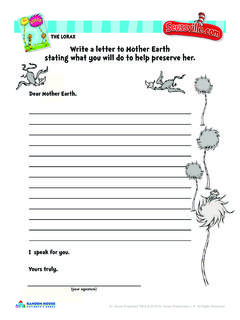
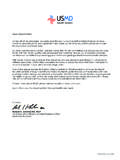
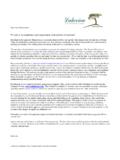
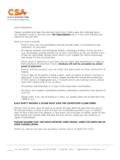
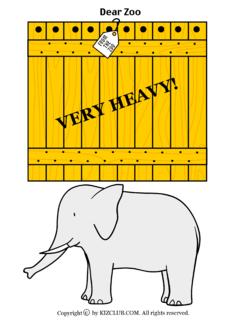
![Dear [Name], - Lymphatic Malformations | Liam's Land](/cache/preview/7/9/2/9/5/b/4/9/thumb-79295b495954d75643e45e6ffd11dfbc.jpg)
